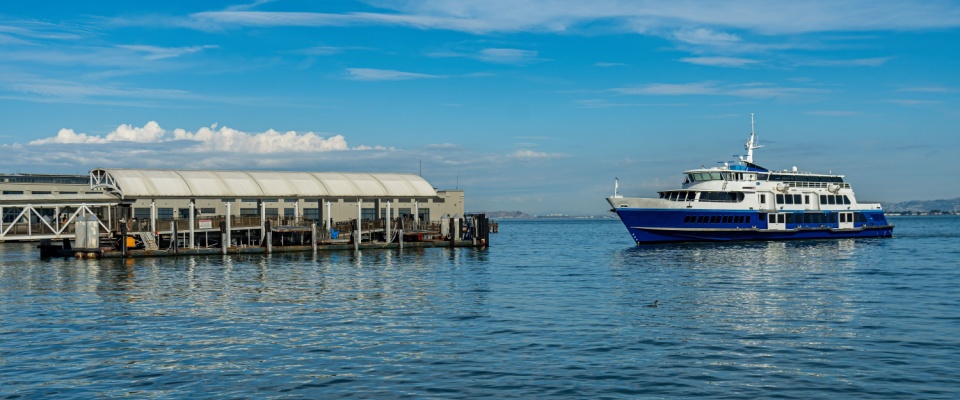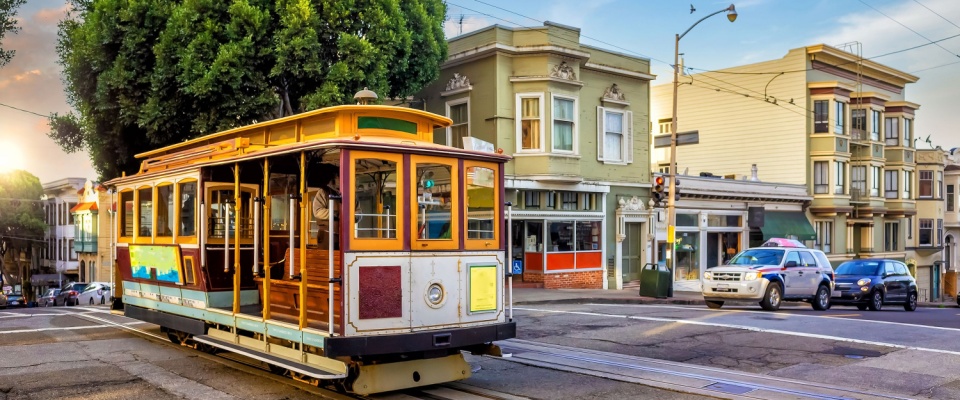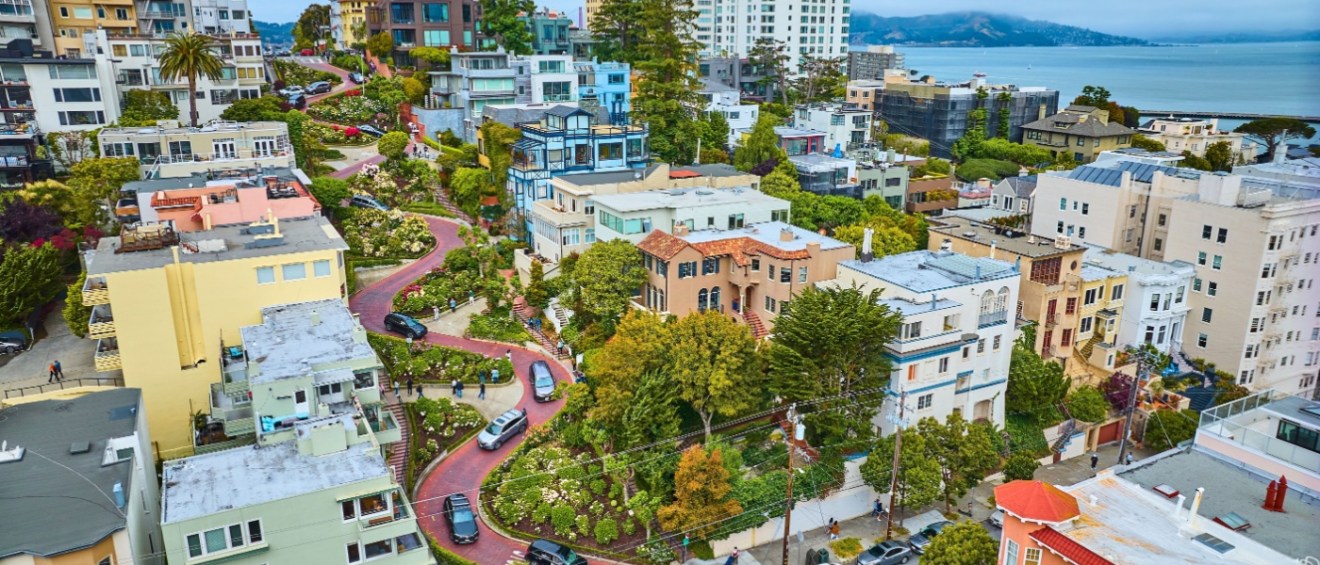Getting around the Bay: A renter’s guide to public transport in San Francisco
Share this article:
Renting in San Francisco can be exciting. The city’s energy, culture, and stunning views make it a dream for many renters. But anyone who’s ever looked for parking in the city knows that owning a car here isn’t always easy (or cheap). Between limited parking spaces, steep streets, and heavy traffic, getting around without a car can actually be a smarter choice for renters.
Luckily, public transport in San Francisco is among the best in the U.S., connecting neighborhoods across the city and beyond. Whether you’re commuting to work downtown, exploring Fisherman’s Wharf, or heading across the Bay, there’s likely a convenient transit option nearby.
Here are the main types of public transit you can rely on in San Francisco:
- Muni buses and light rail
- BART (Bay Area Rapid Transit)
- Historic cable cars and streetcars
- Caltrain
- Ferries
Muni keeps San Francisco moving
Operated by the San Francisco Municipal Transportation Agency, Muni is the heart of public transport in San Francisco. It includes both bus and light rail service, reaching nearly every corner of the city.
Muni buses cover more than 50 routes that connect neighborhoods from Ocean Beach to the Mission and Chinatown. They’re great for renters who live in residential areas not directly served by trains. You can easily catch a bus to downtown, a grocery store, or a BART station.
Muni Metro light rail runs both underground and at street level, offering a fast way to get across town. Major lines include:
- N Judah: perfect for renters in the Sunset District heading downtown
- T Third: connects the Bayview area to the city center
- K Ingleside, L Taraval, and M Ocean View: serve southern neighborhoods and link to Balboa Park
With reloadable Clipper cards or mobile apps, paying fares is simple. Muni is also known for offering discounted passes for students, seniors, and low-income riders, which makes it an affordable option for many renters.
BART connects the city and the Bay Area
BART (Bay Area Rapid Transit) is the main regional rail system that connects San Francisco to the East Bay, South Bay, and San Mateo County. If you live or work near a BART station, it’s one of the fastest ways to travel around the Bay Area.
In San Francisco, key stations include Civic Center, Powell Street, Montgomery Street, and Embarcadero, all located along Market Street. From there, trains head east under the Bay to cities like Oakland, Berkeley, and Walnut Creek, and south to Daly City and Millbrae.
For renters, BART is ideal if you work outside the city or need to reach the San Francisco International Airport. The direct BART train to the airport saves both time and money compared to driving or rideshares.
Ride into history on cable cars and streetcars
No mention of public transport in San Francisco would be complete without the city’s world-famous cable cars. These historic trolleys have been operating since the 1870s and are now a National Historic Landmark that still serves locals and tourists alike.
The three main lines — Powell-Hyde, Powell-Mason, and California Street — climb the city’s iconic hills, offering both charm and convenience. Renters living in or near Nob Hill, Russian Hill, or downtown can use them for short commutes or scenic rides.
Meanwhile, historic streetcars (the F-Market & Wharves line) travel along Market Street and the Embarcadero, connecting the Castro District with Fisherman’s Wharf. These vintage vehicles from around the world add character to daily commutes and are a fun, practical way to travel across some of San Francisco’s busiest areas.
Caltrain for South Bay commuters
For renters who work or study outside the city, Caltrain is another solid option. It runs from San Francisco’s 4th and King Station down the peninsula through cities like San Mateo, Palo Alto, and Mountain View, all the way to San Jose.
Many renters in San Francisco use Caltrain to reach tech hubs in Silicon Valley or to visit friends in the South Bay. Trains are comfortable, offer free Wi-Fi, and allow bikes on board — perfect for renters who prefer an eco-friendly commute.
With the new electrification project improving speed and sustainability, Caltrain is becoming even more convenient for Bay Area travelers.
Ferries with a view
If you want your commute to come with scenic views, San Francisco’s ferries are unbeatable. The San Francisco Bay Ferry connects the Ferry Building and Pier 41 to destinations like Oakland, Alameda, Vallejo, and Richmond.
For renters living near the waterfront or in downtown neighborhoods, the ferry can be a relaxing and time-saving way to get across the Bay. You can even bring your bike on board to continue your journey once you dock.
Besides being practical, ferries offer a peaceful alternative to the usual rush-hour grind — especially for renters who prefer to start and end their day on the water.
Why renters should embrace public transport in San Francisco
Choosing public transport in San Francisco is also a convenient way to save money, especially if you’re a renter. With a strong network of buses, trains, and ferries, the city makes it easy to live car-free or car-light. That can save renters hundreds of dollars each month on gas, insurance, and parking.
It also opens up more choices when looking for an apartment. You can rent in quieter neighborhoods farther from downtown and still stay connected to the city’s heart through public transit.
San Francisco’s public transportation system also supports a more sustainable way of living by reducing traffic congestion, pollution, and your carbon footprint.
Getting around San Francisco without a car is easier than you might think. From Muni’s citywide routes to BART’s regional reach, from cable cars to ferries, renters have plenty of reliable and affordable ways to move through the city.
So next time you’re apartment hunting in the Bay Area, keep transit access in mind because with public transport in San Francisco, every neighborhood is just a ride away.
If you’re searching for an apartment in another city, here are our public transit guides for Atlanta, Orlando, FL, Detroit, and Milwaukee.
FAQs: Public transport in San Francisco 2025
Q: Is public transport in San Francisco safe?
A: Yes. San Francisco’s public transportation system is generally safe to use, especially during the day. Like in any major city, it’s best to stay aware of your surroundings and keep your belongings close when riding at night or in crowded areas.
Q: How much does it cost to ride Muni or BART?
A: A standard Muni fare is about $3 for adults, and transfers are valid for 120 minutes. BART fares vary based on distance but usually range from $3 to $10 per trip. You can pay easily with a Clipper card or mobile app.
Q: Can I get around San Francisco without a car?
A: Absolutely. Many residents and renters rely solely on public transport in San Francisco to get around. Between Muni, BART, cable cars, and ferries, you can reach almost anywhere in the city without needing a car.
Q: Are there discounts for frequent riders?
A: Yes. Muni offers monthly passes, and BART provides discounts for seniors, youth, and riders with disabilities. You can also link your Clipper card to save money if you use public transport regularly.
Share this article:
Alexandra Both is a senior real estate writer and research analyst with RentCafe. She brings over almost 10 years of real estate writing experience, having served as a senior editor at Commercial Property Executive and Multi-Housing News. A seasoned journalist, Alexandra has worked across print, online, and broadcast media. Her work has been featured in a variety of prominent outlets, including The New York Times, The Guardian, USA Today, and Architectural Digest. She holds a B.A. in Journalism and an M.A. in Community Development.
The Ready Renter has your back
Tips, news, and research curated for renters, straight to your inbox.




Related posts
Subscribe to
The Ready Renter newsletter











